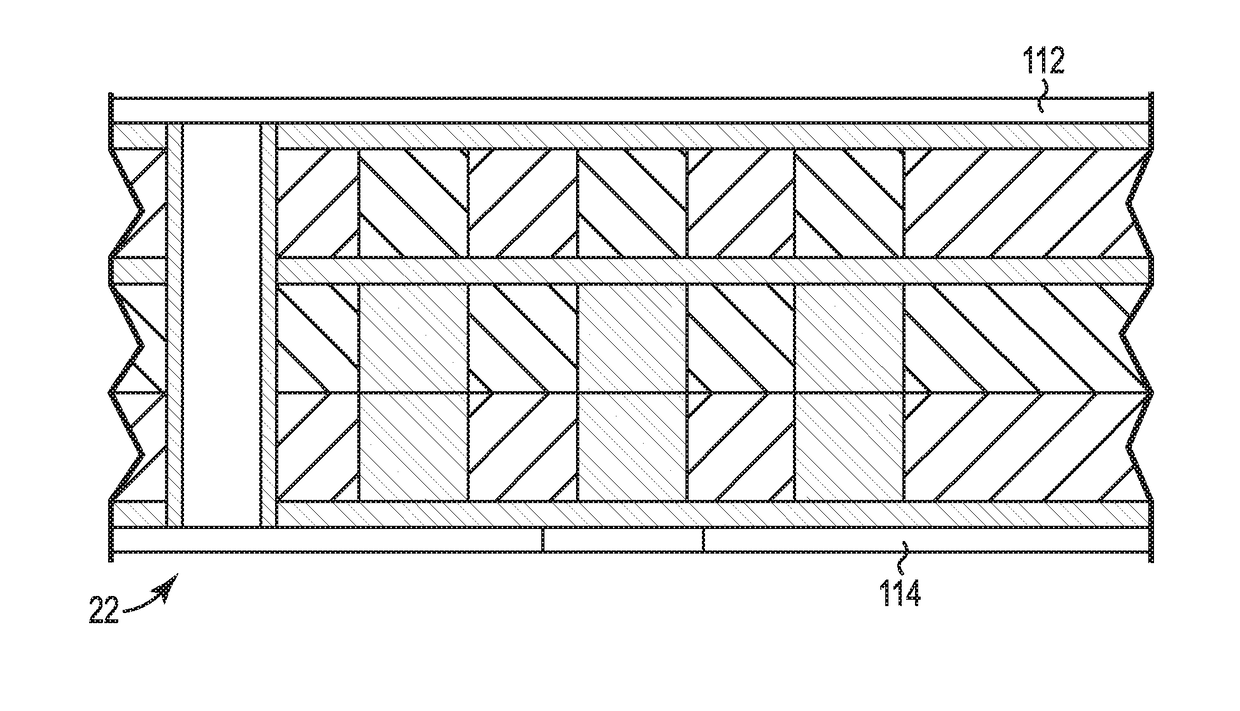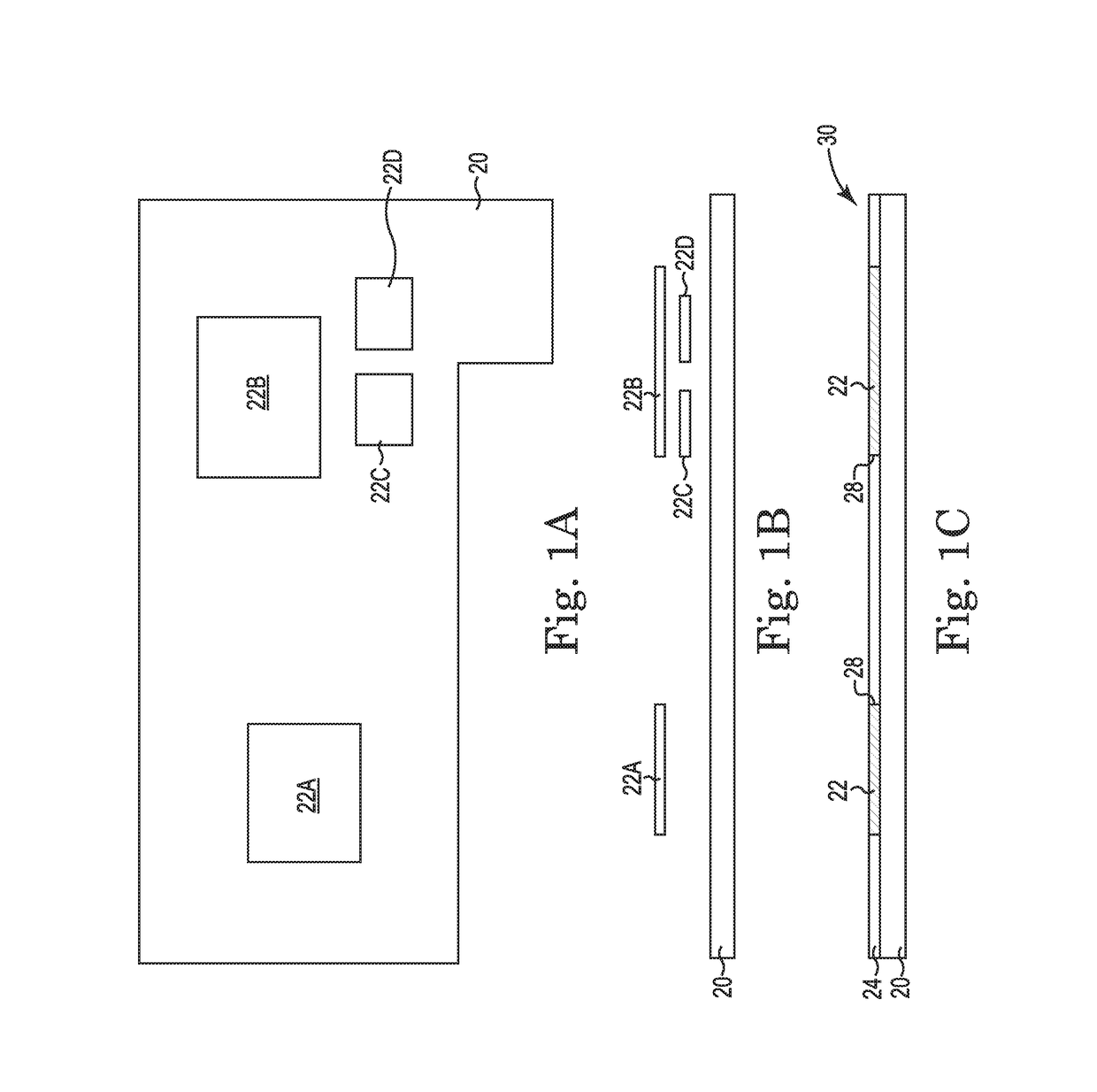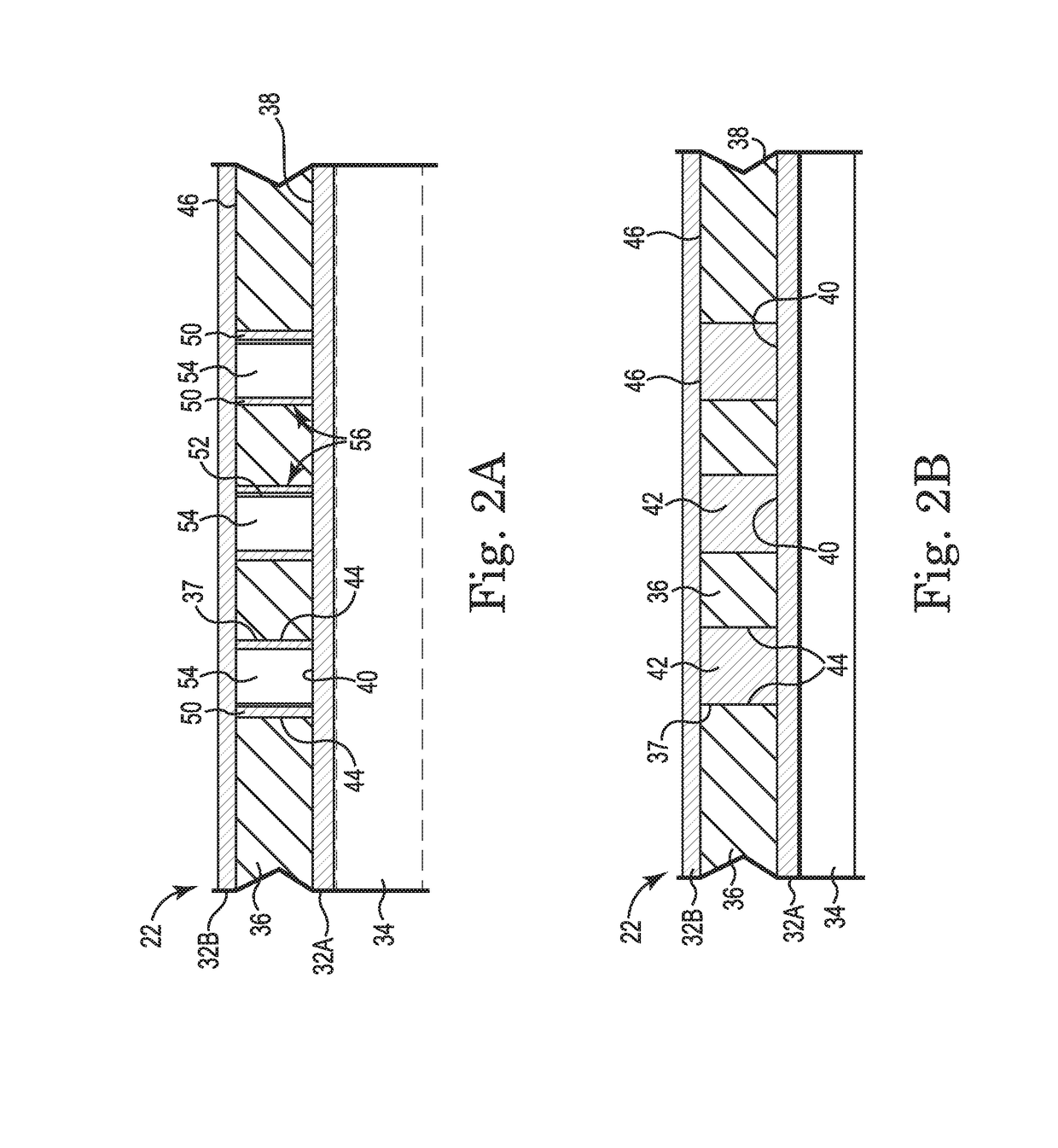Hybrid printed circuit assembly with low density main core and embedded high density circuit regions
a printed circuit and high density technology, applied in the association of printed circuits, non-printed electric components, conductive pattern formation, etc., can solve the problems of carbon contamination, limited layer count or feature registration of flexible circuits, and high cost of flexible circuits compared to some rigid pcb products, etc., to achieve attractive manufacturing cost and high density circuit structure
- Summary
- Abstract
- Description
- Claims
- Application Information
AI Technical Summary
Benefits of technology
Problems solved by technology
Method used
Image
Examples
Embodiment Construction
[0052]A high density circuit structure according to the present disclosure may permit fine contact-to-contact spacing (pitch) on the order of less than 1.0 mm pitch, and more preferably a pitch of less than about 0.7 millimeter, and most preferably a pitch of less than about 0.4 millimeter. Such fine pitch high density circuit structures are especially useful for communications, wireless, and memory devices.
[0053]The present high density circuit structure can be configured as a low cost, high signal performance electrical interconnect assembly, which has a low profile that is particularly useful for desktop and mobile PC applications. IC devices can be installed and uninstalled without the need to reflow solder. The solder-free electrical connection of the IC devices is environmentally friendly. In another embodiment, the high density circuit structure can also be a portion of a socket or semiconductor package.
[0054]FIGS. 1A and 1B schematically illustrate the merger of a lower dens...
PUM
 Login to View More
Login to View More Abstract
Description
Claims
Application Information
 Login to View More
Login to View More - R&D
- Intellectual Property
- Life Sciences
- Materials
- Tech Scout
- Unparalleled Data Quality
- Higher Quality Content
- 60% Fewer Hallucinations
Browse by: Latest US Patents, China's latest patents, Technical Efficacy Thesaurus, Application Domain, Technology Topic, Popular Technical Reports.
© 2025 PatSnap. All rights reserved.Legal|Privacy policy|Modern Slavery Act Transparency Statement|Sitemap|About US| Contact US: help@patsnap.com



